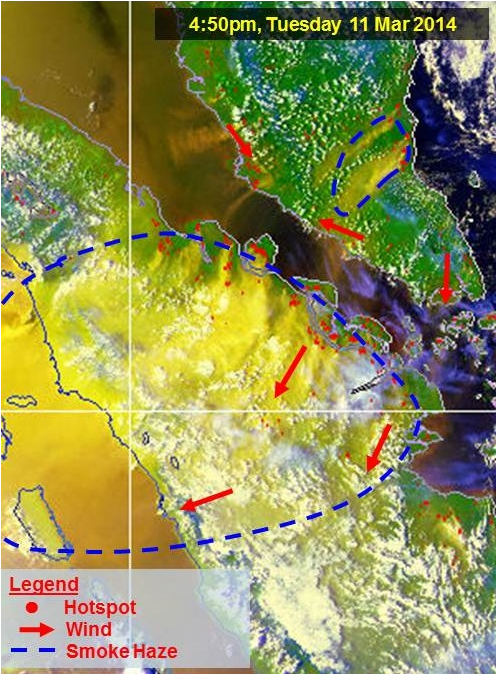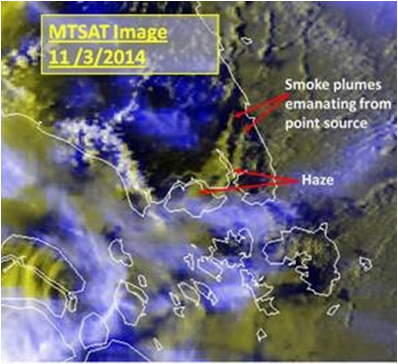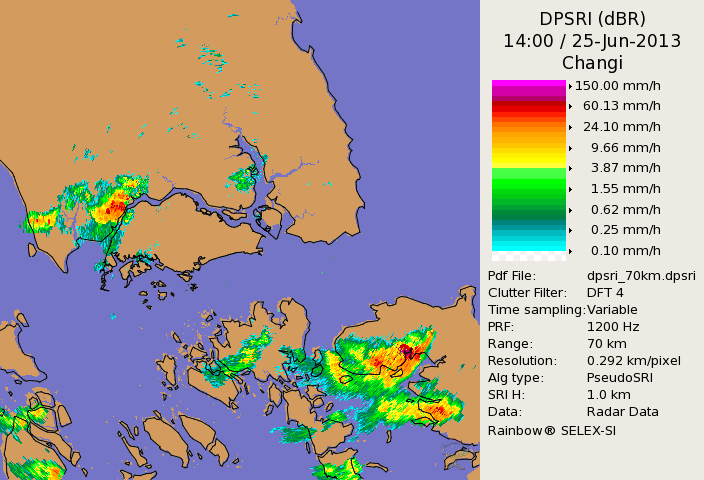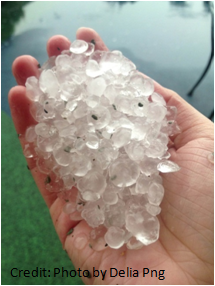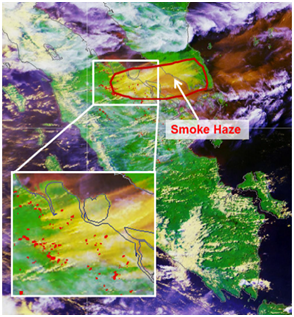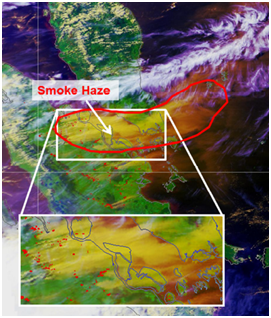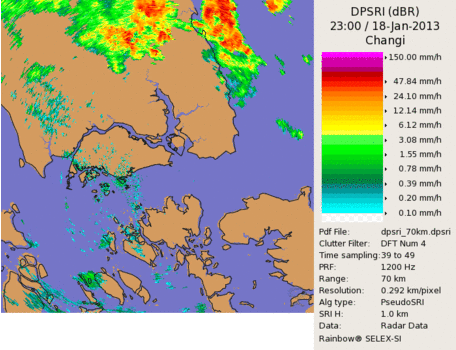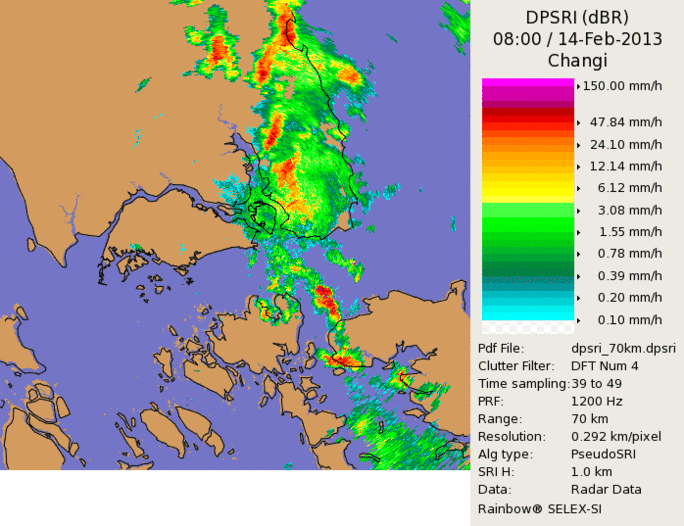Singapore, 20 March 2015 – It has been hazy in Singapore today. The PM2.5 levels are elevated in most regions of Singapore. At 8pm, the 24-hr PSI was 74-86, in the Moderate range, while the 3-hr PSI was 99, and the 1-hr PM2.5 concentration was 16-54 ug/m3.
2The haziness is likely due to an accumulation of increased particulate matter in the atmosphere under light wind conditions throughout today. Burning activities in the Northern Asean region, Peninsular Malaysia and Sumatra could have contributed to the increased concentration of particulate matter.
3The current hazy conditions are expected to persist for the rest of today. For tomorrow, the prevailing winds are expected to be light and variable in direction, and hazy conditions can still be expected. The 24-hr PSI for Singapore is expected to be in the Moderate range.
4The health impact of haze is dependent on one’s health status, the PSI level, and the length and intensity of outdoor activity. Reducing outdoor activities and physical exertion can help limit the ill effects from haze exposure. Persons who are not feeling well, especially the elderly and children, and those with chronic heart or lung conditions, should seek medical attention. Given the air quality forecast for the next 24 hours, everyone can continue with normal activities.
5For updates, visit our NEA website (www.nea.gov.sg), the haze microsite (www.haze.gov.sg), or follow us on NEA Facebook (www.facebook.com/NEASingapore) and NEA Twitter (@NEAsg).
– End –
